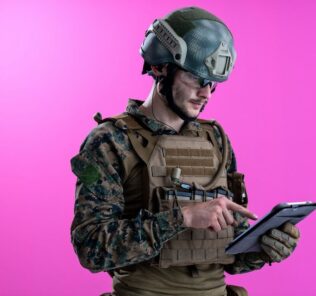The Role for Clinical Simulation in Career Technical Education
Career Technical Education (CTE) is a course of training that focuses on providing students with the knowledge and skills they need to be prepared for post-secondary education, or to more immediately enter directly into a career. Today, Pocket Nurse Guest Author Dawn Patton Mangine shares the benefits of CTE and ways in which clinical simulation can be applied!
Career Technical Education (CTE) is a growing educational path, and health sciences is a popular option. You might be surprised to learn that CTE uses clinical simulation to teach students! At this time, about 75 percent of high school graduates are earning at least one CTE credit, and 21 percent of high school students are taking a concentration of CTE courses.
CTE is especially relevant to our field of simulation in healthcare, as of 2012, 36 percent of CTE students pursued a healthcare career educational track!
Sponsored Content:
Benefits of Career Technical Education (CTE)
- Better high school graduation rates, lower dropout rates: Students involved in CTE are less likely to drop out of high school than the nation average. Students who are concentrating their education in CTE have a 93 percent graduation rate.
- Hands-on learning in realistic settings: Forty-five percent of students have said CTE courses provide them with real-world examples that help them better understand academic classes.
- Prepares students for post-secondary education: In many high schools across the nation, course taken in a CTE program qualify as dual-enrollment credits, which can apply to the student’s chosen degree path in post-secondary education.
Role of Clinical Simulation in CTE
Health science CTE programs have been integrating simulation-based learning (SBL) into classrooms for about five years now. By offering simulated healthcare environments, students are being exposed to realistic situations. Replicating workplace experiences in the classroom becomes especially important whenever there are few local workplaces, or, in the case of health care, limited availability of clinical field placements. Healthcare Simulation also provides opportunities when students cannot be exposed to certain things because of liability issues.
CTE educators prioritize the design of authentic and simulated learning experiences because doing so familiarizes students with processes or situations they are likely to encounter on the job. In addition, exposure to simulated learning experiences builds student confidence and prepares them to transition to the workplace. With health care being such a high-stakes field, simulation scenarios provide students with the opportunity to learn from their mistakes without the consequences of harming actual patients.
Sponsored Content:
Work-based learning is an educational strategy that allows learners to develop technical and employability skills through authentic work experience. Although the way it is deployed differs from state to state, many states are creating “Simulation Workspaces” to provide this learning, each with varying levels of intensity and fidelity. Students in health career clusters can benefit from practicing hands-on skills in a simulated hospital room, pharmacy, ambulance, or skills nursing residential room.
Transforming a classroom into a clinical setting isn’t about filling it with devices and manikins; it’s about turning it into an environment of learning and curiosity, where inquisitiveness is rewarded, and mistakes are met with understanding, not judgement.
To foster an engaging learning environment, here are two tips:
- Encourage all questions: When students feel they can ask questions in a safe and supportive environment, true learning can happen.
- Create a simulation lab or workspace that mirrors a clinical setting: Hang anatomy charts for quick and easy reference; place manikins in simulated hospital beds; set up anatomical models; and so on.
Standardized Participants
One way to bring medical simulation into the healthcare curriculum is to consider developing a standardized patient (SP) program, even using role-play with students. Manikins can provide basic feedback for some simulation scenarios, but as healthcare students progress in their education, more fidelity is required.
Scenarios where an SP in not only preferable, but vital for fidelity, are scenarios where communication is important. SPs can provide critical elements that a patient simulator cannot, including tone of voice, facial expression, movement, emotion, and the portrayal of symptomatic behavior.
Simulation Technology to Enhance the CTE Lab
In addition, while human patient simulators can be programmed to present with certain vital signs, it can be more challenging to teach certain skills with Standardized Patients (who presumably will have healthy vital signs). Fortunately, distributors like Pocket Nurse offer programmable stethoscopes, overlays, simulated glucometers, BPSim by KbPort, and SimVS systems to help increase the level of realism during these medical education experiences. Wearable nursing simulation technology is also available to create scenarios for bariatric patients, starting an IV, and giving injections.
Learn more about upgrading a Health Science CTE program with the Pocket Nurse ebook linked below!
Upgrade Your Health Career CTE Program with this Pocket Nurse eBook today!
Dawn Patton Mangine is Content Manager for Pocket Nurse, a leading manufacturer and distributor of healthcare simulation education supplies. Dawn has been with Pocket Nurse since April of 2016. As content manager, she has created and manages SimTalk Blog, a space for topics on simulation and healthcare education. She also curates the Pocket Nurse Twitter and Instagram feeds. Dawn is a creator and story teller, and lives in Pittsburgh with her family (husband, three children, and one dog.)
Sponsored Content:




















